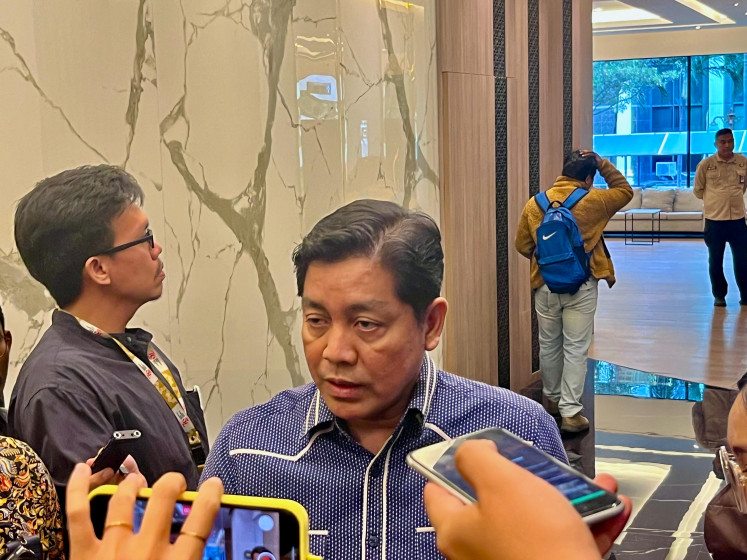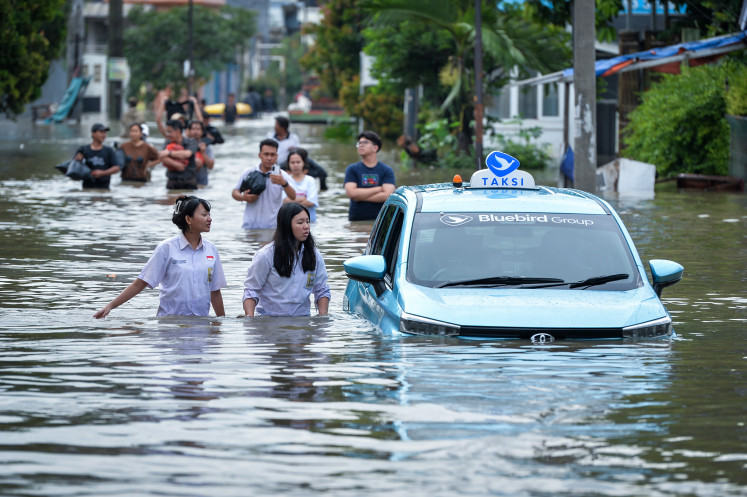Popular Reads
Top Results
Can't find what you're looking for?
View all search resultsPopular Reads
Top Results
Can't find what you're looking for?
View all search resultsWaiting for RI observers at Preah Vihear
A year ago, Cambodia and Thailand fought a series of short but nasty skirmishes along their joint border
Change text size
Gift Premium Articles
to Anyone
A
year ago, Cambodia and Thailand fought a series of short but nasty skirmishes along their joint border. Efforts to reduce tensions through the deployment of Indonesian observers remain stillborn; one year on there are no observers and on the Cambodian side there is just a lone man with Indonesian and ASEAN flags blowing in the breeze.
The dispute, centered on the emblematic Preah Vihear Temple — in Cambodian territory but down the years oft-claimed by Thailand — was serious enough to seize the attention of the UN Security Council.
It also triggered signs that ASEAN wanted a more proactive role in ensuring stability in its region. This optimism, however, has given way to stasis and further questioning of the organization’s ability to look after its own backyard.
Earlier this month, I met an official from Cambodia’s National Task Force whose job is to prepare the ground for the observers’ arrival.
After I traveled four hours north from Siem Reap, home of the famous Angkor ruins, he picked me up in his new Mitsubishi flat bed with ASEAN logo decals and license plate: IOT 3.
IOT is for Indonesia Observer Team. Under the terms of reference signed by Cambodia in May 2011 ahead of the ASEAN Summit in Jakarta, there were to be 15 Indonesian soldiers and civilians on either side of the border.
Thailand has not signed the agreement and it never came into force. Then foreign minister Kasit Piromya initially announced Bangkok’s agreement to the observer mission’s deployment but objections from the military caused the historic deal to falter.
First, Thailand quibbled over the team’s location, their name, their diplomatic status and what they would wear. Then Thai generals said they would not accept Indonesian soldiers in uniform on their soil as it was an affront to their sovereignty.
A special meeting convened by President Susilo Bambang Yudhoyono on the sidelines of the summit could not remove the roadblock. A July 2011 decision of the International Court of Justice ordering their deployment was ignored.
The narrow interests of the Thai military trumped ASEAN’s potential collective goal of coming up with a working mechanism to deal with violent conflict within its own membership.
Back in Cambodia’s far north, on the border near Preah Vihear, bored Cambodian soldiers stare across the valley at their Thai counterparts; who seem, likewise, to have little else to do but in turn stare back. To occupy their time they eat, sleep, converse, play cards; it is too brutally hot to exercise. Some say they just want to go home.
After visiting the World Heritage temple site, we visited the empty headquarters of the ASEAN Mission for Cease-Fire Observation. The red and white Indonesian flag is everywhere. Had the Indonesians arrived, I asked?
No. What did my guide do all day? He waited for the Indonesians, was the response; he did not expect them anytime soon. This poor fellow, originally from Kompong Cham, Cambodia’s border province with Vietnam many miles away, was like a sad facsimile of a character from a Conrad novel — sent out to the back of beyond by his bosses and, perhaps, forgotten.
A few days after my visit, on March 5, Cambodian Foreign Minister Hor Namhong and his Indonesian opposite number Marty Natalegawa met in Phnom Penh and reportedly discussed the IOT, but most officials in the capital seemed to want to forget about this problem in the year that is Cambodia’s turn to chair ASEAN, and as Phnom Penh’s efforts to secure a temporary seat on the UN Security Council intensify. Such is his life that my friend from the National Task Force waits for something that may never arrive.
But even if they were deployed, the observers would only solve part of the problem, as their area of operations only covers Preah Vihear and its environs, particularly the almost 18 square km provisional demilitarized area created by the ICJ decision.
Around 150 km to the west, troops from both countries face off against each other around the more obscure temples of Ta Moan and Ta Krabei. They are heavily armed, well dug-in, and so close that at Ta Moan they even share the same shade from the trees.
This is not sustainable — it is simply too risky that firefights could be triggered, even if only accidentally. Visiting Ta Moan, it was difficult to accept that Thailand and Cambodia, under the ASEAN umbrella, had sworn undying friendship toward each other.
The world’s focus has shifted elsewhere, but here on this disputed frontier the conflict continues. The week before my visit gunshots terrified the residents of a nearby town; they turned out only to be soldiers shooting harmlessly into the air — last year’s fighting suggests such noises might not always be so benign.
But rather than wait for the conflict to reignite and cause problems again for Cambodia, Thailand and ASEAN, there is a first step that could be taken toward preventing future misunderstandings and violent conflict — deploy the observers.
The flags are flying, the maps are posted, vehicles are fueled and, on the border, there is a lonely Cambodian official ready and waiting to provide a welcome.
The writer is the senior policy advisor at the International Crisis Group based in Brussels.










